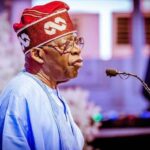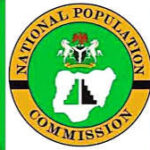Citizen Science is a concept that engages the public in a scientific project, or otherwise, as to the participation of the public in some or all aspects of biodiversity and environmental conservation.
Citizen scientists on the other hand, are people who have chosen to use their free time and resources to engage in scientific projects or processes.
Through this concept, scientists and the public share ecological knowledge, taxonomic skills and awareness on the loss of biodiversity-the variety of life forms-through collaborative research projects at national, regional or geographic scales.
These include, for example, bird atlases such as monitoring the trend of bird populations, migration, etc., insect counts, and sea turtle surveys.
This approach to biodiversity mapping (biomapping) has a long history dating back to the beginning of science and natural history observation, including the work of John Ray, the great 17th- century naturalist who involved many volunteers (citizen scientists) in collecting specimens.
Recently, the concept of Citizen Science, particularly in developing countries including Nigeria has just increased because of the need to map and conserve biological diversity.
Citizen scientists can generate enormous scientific data that has shown to yield significant discoveries and results such as tracking natural changes in biological organisms and to monitor the impacts of environmental parameters and human activities on biodiversity and the environment as well.
Around the world, various organizations are involved in citizen science movement; for example, the National Wildlife Federation of the United States with more than four million members; the Woodland Trust in the United Kingdom, Biodiversity Development Institute (BDI) and Fitzpatrick Institute of African Ornithology, South Africa.
In Nigeria, the A. P. Leventis Ornithological Research Institute (APLORI) located in Jos promotes the citizen science movement. One of such important project is the Nigeria Bird Atlas Project (NiBAP) which aims to map the distribution of birds through the help of citizen scientists. Occasionally, public awareness and participant engagement are mainly carried out through seminars and training workshops across universities to raise awareness about citizen science participation, but also a concern for bird and other biodiversity conservation.
More so, other important citizen science projects through nature photography include biomapping projects, which were been developed and managed by the Virtual Museum, Animal Demography Unit in South Africa.
These projects include FrogMAP (distribution maps for Amphibians), LepiMAP (distribution maps for Butterflies and Moths), and TreeMAP (distribution maps for Trees). Over the last five years since when citizen science started in Nigeria, through continued awareness creation and advocacy, participation for citizen science continues to grow. However, there appears to have been relatively greater engagement from the public considering Nigeria’s large population.
This is of great concern because biodiversity in Nigeria is rapidly declining in part largely due to population growth, urbanization, habitat loss and deforestation. Likely, we may lose many species before they are even mapped. Consequently, concerted efforts to promote increased public engagement in biomapping through the Virtual Museum and NiBAP projects are therefore needed.
Indeed, the Virtual Museum has enormous potential, considering the relatively lower level of expertise required to participate and the additional diversity of other taxa including reptiles, mushrooms, spiders, scorpions, dragonflies, and so on that the Virtual Museum accommodates.
Data generated from Virtual Museum or biodiversity mapping has the potential to provide the current distribution of biodiversity amidst human negative activities on biodiversity and the environment.
Data from citizen science has shown to influence policy and decision-making related to the environment and biodiversity conservation and proven a powerful tool in enhancing environmental and conservation education.
This is because citizen science participation improved understanding of the local biodiversity while enhancing scientific and technology literacy in biodiversity conservation.
Abubakar S. Ringim, Department of Biological Sciences, Federal University Dutse, Jigawa State
 Join Daily Trust WhatsApp Community For Quick Access To News and Happenings Around You.
Join Daily Trust WhatsApp Community For Quick Access To News and Happenings Around You.


